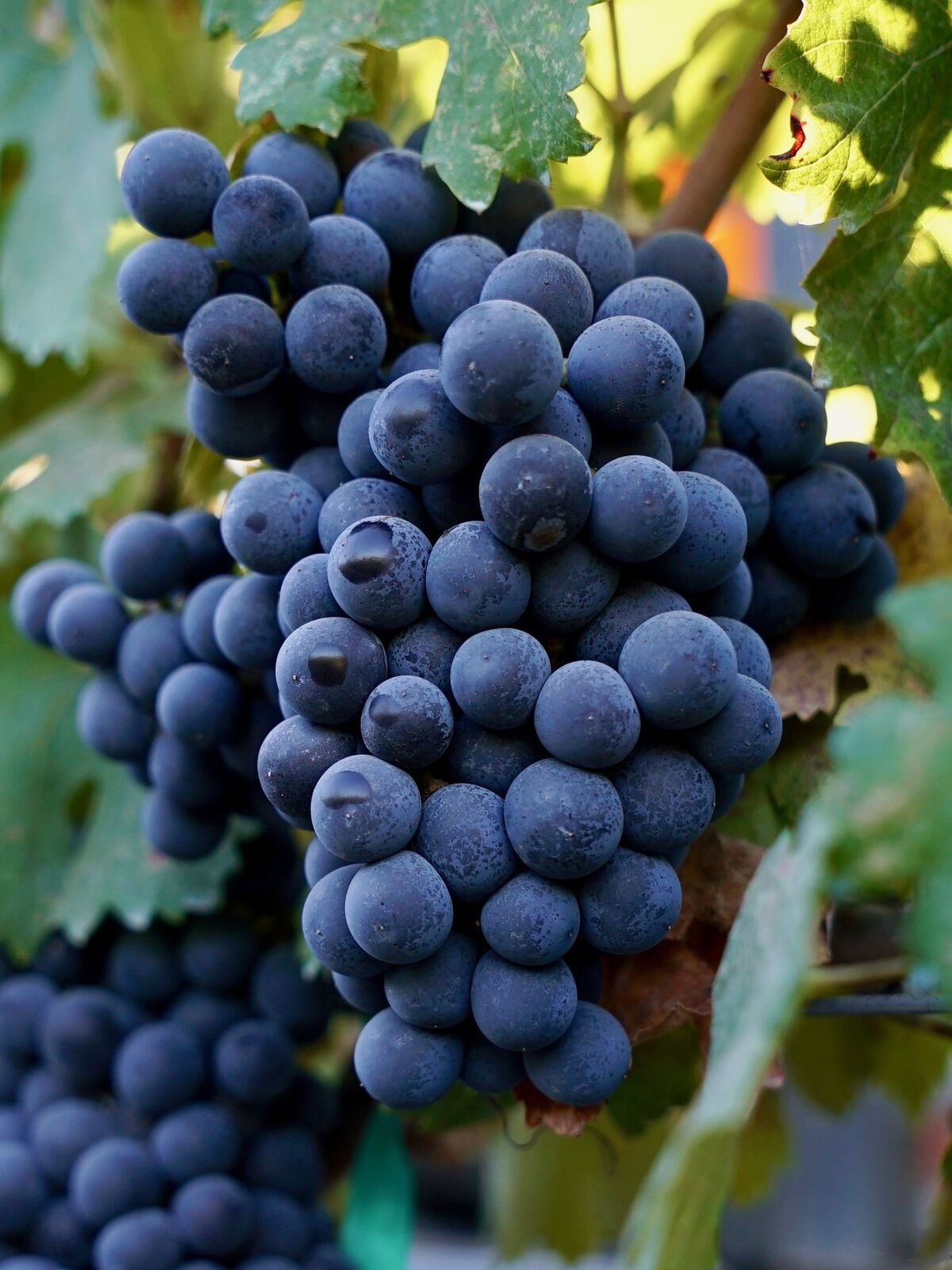Vaccarèse
Vaccarèse is one of the rarest grapes in Chateauneuf-du-Pape at just over 10 acres planted. There is little more outside Chateauneuf, and none, until we brought in ours, elsewhere in the world. But we believe it shows great potential, with lovely dark color and floral and herbal aromatics.

History
The grape Vaccarèse appears to have been named after the village of Vaccarès, in the Camargue region just south-west of Avignon. As Vaccarèse, it has a long history in the Rhone, with its first historical mention coming in 1538 as a grape planted in a village outside Avignon (coincidentally, in a document with one of the earliest-ever mentions of Bourboulenc too). As you would expect of a grape at least five centuries old, it's known by a few other names, with Camarèse (apparently named after another southern French village, Camarès) and Brun Argenté (which translates to "brown silvered" for its dark bark and silvery look of the underside of its leaves) being the two most common.
Despite this long history, it does not appear to have ever been planted far from the Rhone Valley, or been a dominant grape even in its homeland. One of the rarest grapes in Chateauneuf-du-Pape appellation at just over 10 acres, Vaccarèse accounts for just 0.3% of the appellation's acreage. There is little more outside Chateauneuf, with just 28 acres recorded in France as of 2016 and none, until we brought in ours, elsewhere in the world.
Vaccarèse is pronounced vɒk-ɜ-rɛz. (vock-uh-rez). Even though it looks like an Italian word, the final "e" is silent. Like nearly all French words, the syllables are emphasized equally.
In our first round of grape imports, which we brought into quarantine in 1989 and were released in 1992, we focused on the main grapes at Beaucastel: Mourvedre, Syrah, Grenache, Counoise, Roussanne, Grenache Blanc, Marsanne, and Viognier. Shortly after, we brought in Picpoul Blanc. By 2003, we'd been sufficiently convinced that the more obscure Rhone grapes could shine here that we decided to import the complete Beaucastel collection, which meant another seven grapes. Vaccarese was in that group. The cuttings cleared quarantine in 2015, were propagated, and then planted at Tablas in 2017.
We chose a small (0.66 acre) block with a west-facing slope at the far western edge of Tablas Creek for Vaccarèse, and harvested our first small crop in 2019.
Vaccarèse in the Vineyard & Cellar
In look and growth it seems similar to Counoise and Cinsaut, with large berries and large clusters, except that the colors of the berries are darker, more blue-black than the translucent purple of the others. It is reputed to be highly susceptible to powdery mildew, which is not a big problem in Paso Robles but may explain its scarcity in the Rhone.
In 2019 (our first harvest) we picked 2.61 tons of Vaccarèse at 22.4° Brix (roughly 13.8% potential alcohol), a pH of 3.50, and total acids of 4.76. The sugars were very near the median for our red grapes in 2019, while the pH was one of the lower (higher acid) readings we saw.
We made the decision to bottle our small 2019 production on its own. In 2020, it was good enough to also play a role in the Esprit de Tablas, and in the long run, we see it as both a viable varietal wine and a useful contributor to our red blends.
Aromas and Flavors
In his seminal Ampelographie, Pierre Galet praises Vaccarèse for "an indisputable aromatic floral originality, a very fresh and very elegant flavor, particularly interesting for moderating the alcoholic character of Grenache in the rosés of Chusclan and the red wines of Chateauneuf du Pape."
Vaccarèse reminds us more of a Loire-style Cabernet Franc than it does anything from the Rhone. It has a lovely deep purple color, with a nose of pine forest and minty juniper. The mouth shows notes of tobacco and spice, medium body, some tannic grip, and black fruit flavors coming out with time.
This article originally appeared in one of our newsletters. Each newsletter, we spotlight the history and characteristics of one of our Rhone varietals. You can sign up for our mailing list.
You can view a one-minute summary of Vaccarèse on our YouTube page.
You can go back to the summaries of the different Rhône grape varietals.